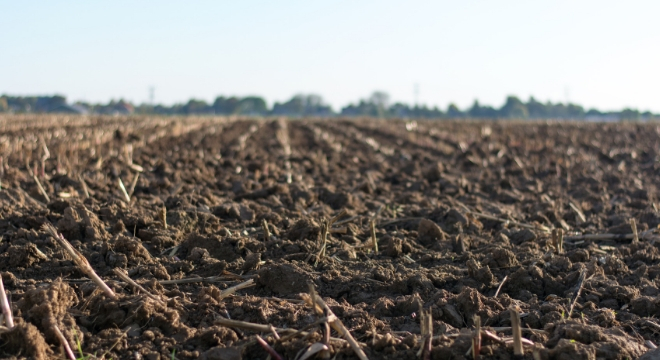
Digging in on soil health
Soil health has been called the “next frontier” of agriculture by no less than this very magazine. Something that would be useful in navigating that new territory would be a map. Coming up with those metaphorical maps is the goal of a new multimillion-dollar research project that will take place across the country over the next four years.
Unlike other efforts, this project is aimed specifically at improving soil health in growing potatoes. In addition, the project will also specifically focus on the economic viability of different practices and will engage growers on their adoption.
Carl Rosen, Head and Professor of the University of Minnesota’s Department of Soil, Water and Climate, is leading the research project, which is funded by a $8 million grant over four years from the USDA’s National Institute of Food and Agriculture (NIFA) through the Specialty Crop Research Initiative (SCRI). The research team involves 24 collaborators from 10 universities consisting of soil scientists, plant pathologists and potato agronomists.
“We want to look at ways of providing different tools for managing diseases, and soil health is one way of doing that,” Rosen said.
What does healthy soil look like?
The objective of the research is stated formally as establishing “physical, chemical, and biological indicators of soil health for sustainable potato production.”
In others words, the project is meant to answer questions like: What does a healthy soil look like, and how does a grower know if their soil is healthy or not?
Given how much variability there is in soil and the microbes that live there, looking at just one location would not give the same view on soil health as this project aims to deliver.
“I think having this broader view will give us a much different perspective on how soil health can be improved in potato production and one size might not fit all,” Rosen said. “It’s a start.”
Importantly, Rosen said, the end goal is not just to scientifically answer those questions, but also to give growers practical and economically viable ways to improve the health of their fields.
The project will look at the effects of potato cultivar, fumigation, crop rotation, cover crops, green manures, microbial inoculants and nutrient amendments on soil health, as well as on potato health and yields.
To achieve those goals the project is divided up into four distinct objectives.
- To use controlled research plots to evaluate practices and their effects on soil health and yields.
- Examine what some innovative growers are already doing to improve soil health, in order to incorporate the practical success that farmers have already achieved.
- Look at these ways to improve soil health through the lens of financial realty, to look at which of these suggestions are viable given real-world costs.
- Finally, researchers plan to create outreach materials, including handbooks, to help growers put the lessons learned from the research into action.
The USDA has released the funds for the first year of the project and will release the funding for each following year as the research rolls on.
Rosen said he’s navigated difficulties like this in the past, even having a three-year project become a four-year project due to a past government shutdown.
“We know we have the first-year funding, so it’s good to get it started,” he said.
That first installment comes to just under $1.9 million, which will allow work to begin on all four objectives. So as the field trials get underway, researchers will look at the economic angle of soil health. Christopher McIntosh, interim head of the department of agricultural economics and rural sociology at the University of Idaho, and Assistant Professor Alexander Maas will look at how economically viable some of the proposed practices are.
McIntosh and Maas said they are not only looking at which proposed practices make economic sense, but they are also examining how growers decide of which practices to implement on their operations.
“What we want to do is figure out what their (growers’) amenability to accept these soil health practices, what that is across different non-traditional producer practices,” Maas said.
The researchers will put questions to producers to figure out what goes into determining whether it’s worth it to a producer to try out a new practice.
“That’s kind of what we’re getting at, trying to find out what their attitudes are toward adopting those and that, in a way, gives us some information about how we might go about making it more likely for them to adopt them if that was the end goal of policy,” McIntosh said.
The other part of their objective is to run the numbers and see if it makes financial sense to operators to implement some of these practices. Though, that piece has its complications as well. The exact benefit of the different practices isn’t known for sure, but will depending on the results of the research.
McIntosh and Maas planned to start by reaching out to growers at the 2018 Montana Seed Potato Seminar, which was slated for early November in Missoula.







